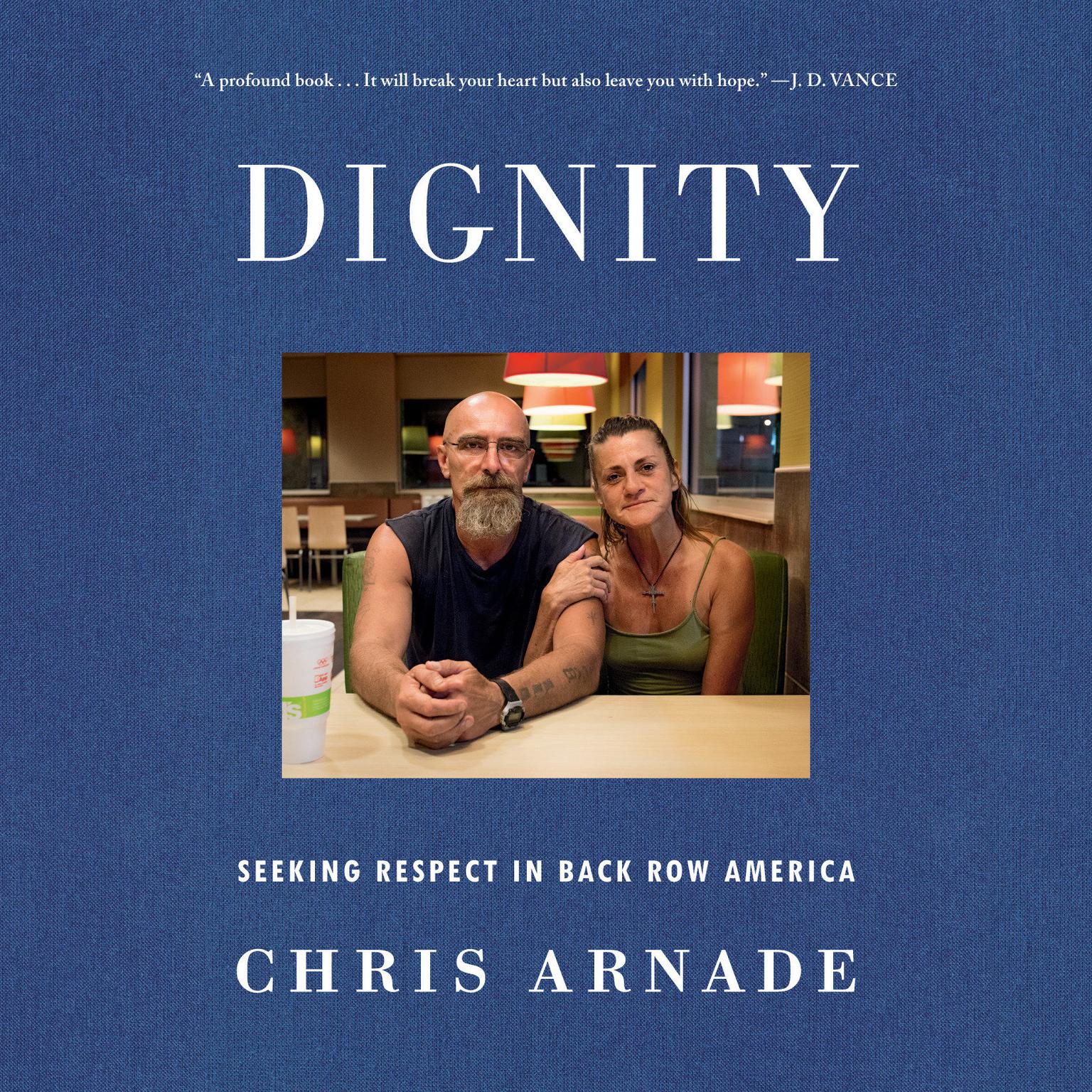 Play Audiobook Sample
Play Audiobook Sample
Dignity: Seeking Respect in Back Row America Audiobook
 Play Audiobook Sample
Play Audiobook Sample
Quick Stats About this Audiobook
Total Audiobook Chapters:
Longest Chapter Length:
Shortest Chapter Length:
Average Chapter Length:
Audiobooks by this Author:
Publisher Description
"Candid, empathetic portraits of silenced men, women, and children." --Kirkus Widely acclaimed photographer and writer Chris Arnade shines new light on America's poor, drug-addicted, and forgotten--both urban and rural, blue state and red state--and indicts the elitists who've left them behind. Like Jacob Riis in the 1890s, Walker Evans in the 1930s, or Michael Harrington in the 1960s, Chris Arnade bares the reality of our current class divide in unforgettable true stories. Arnade's raw, deeply reported accounts cut through today's clickbait media headlines and indict the elitists who misunderstood poverty and addiction in America for decades. After abandoning his Wall Street career, Arnade decided to document poverty and addiction in the Bronx. He began interviewing, photographing, and becoming close friends with homeless addicts, and spent hours in drug dens and McDonald's. Then he started driving across America to see how the rest of the country compared. He found the same types of stories everywhere, across lines of race, ethnicity, religion, and geography. The people he got to know, from Alabama and California to Maine and Nevada, gave Arnade a new respect for the dignity and resilience of what he calls America's Back Row--those who lack the credentials and advantages of the so-called meritocratic upper class. The strivers in the Front Row, with their advanced degrees and upward mobility, see the Back Row's values as worthless. They scorn anyone who stays in a dying town or city as foolish, and mock anyone who clings to religion or tradition as naïve. As Takeesha, a woman in the Bronx, told Arnade, she wants to be seen she sees herself: "a prostitute, a mother of six, and a child of God." This book is his attempt to help the rest of us truly see, hear, and respect millions of people who've been left behind.
Download and start listening now!
Dignity Listener Reviews
Be the first to write a review about this audiobook!
About Chris Arnade
CHRIS ARNADE is a freelance writer and photographer whose work has appeared in the New York Times, Atlantic, Guardian, Washington Post, Financial Times, and Wall Street Journal among many others. He has a PhD in physics from Johns Hopkins University and worked for twenty years as a trader at an elite Wall Street bank before leaving in 2012 to document addiction in the Hunts Point neighborhood of the Bronx.


